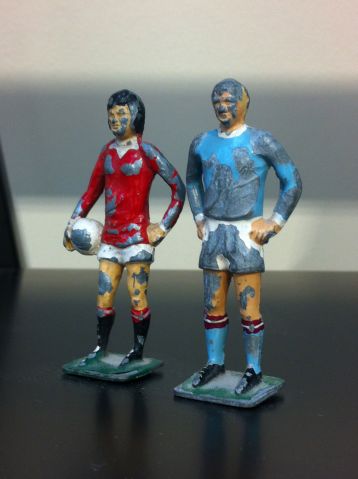I’m going back on myself a bit today in order to try and keep a proper record of everything that’s happened (or not) over the lockdown period. Apart from writing ‘cancelled’ across a number of pages, I’ve effectively stopped using my work diary since March 23rd, the day Boris Johnson announced that we were to stay at home. That’s two months of not keeping a diary – very unusual for me. I got caught out last week through not doing so and missed a deadline and so, decided over the weekend, that I should get back into the habit of noting things down again.
This blog has proven its worth many times; not just as an extremely useful part of my creative profile, but also as a place that logs and records the day to day minutaie of being a working artist – some more significant than others. It acts as a useful reminder and reference point for the creative work I make which can sometimes get a bit lost; I frequently come across images of work here which haven’t been recorded anywhere else.
And so, before it becomes buried and forgotten, it feels important to mark the work that has been made and the things that have happened during these extraordinarily unsettling and uncertain past two months of lockdown – work that has, however tenuously, essentially kept communities of artists connected.
‘Me, Myself and I’
Acknowledging the group exhibition ‘Me, Myself and I’ at the Collyer Bristow Gallery, for example – a show that was closed almost as soon as it opened at the end of February, 2020. It’s remained closed for a subsequent 3 month period, in light of the Coronavirus pandemic, and a timetable of various artists talks and events organised by the curator, Rosalind Davis, to run alongside the show, have also been cancelled. Rosalind has done a great job of staying connected with the artists with work in the show and has continued to keep the show as alive as possible under very difficult circumstances through online talks.
The show was selected by a-n (Artists Network) as one of their week’s top exhibitions in February and an image of my work ‘#UsToo’ (included in the show as part of my ‘Sweet Nothings’ piece) can be seen in the link below:
https://www.a-n.co.uk/news/now-showing-334-the-weeks-top-exhibitions/
‘The Lockdown Chronicles’ hARTslane London
Another positive to come out of lockdown are the ongoing ‘Lockdown Chronicles’ organised by the curatorial team at hARTslane in New Cross Gate, London. The Chronicles are ‘… a series of artist interviews carried out during the Covid-19 lockdown of artists around the world who have collaborated with hARTslane in the past 8 years.’
The hARTslane team believed in the importance of reaching out and sharing ‘… common personal experiences, concerns and struggles; beliefs as well as practical or inspirational hidden gems.‘ The hope was that ‘… these artist stories inspire other fellow artists as well as reassure those who might feel alone or isolated or too overwhelmed to create.‘
To date, 14 artists have been interviewed; I was really pleased to be asked to take part and to be one of them. Mine is number 7 in the series which you can read here:
https://www.hartslane.org/lockdown-chronicles/kate-murdoch
And you can read all the artists stories here:
http://www.hartslane.org/lockdown-chronicles
‘Connected’
I initiated an online project for the month of April, a week or so on from the official start of the lockdown period, which focused on finding and bringing together objects which were similar but different. Reuniting 30 small objects in this way was a tribute to my twin sons who, like so many of us across the entire world at that point, were in total lock down in response to the Coronavirus pandemic. It was a reminder of the importance of the virtues of love and compassion, reaching out, looking out for each other and crucially, staying connected – especially with those who were alone, in such unprecedented times.
It’s not over yet, but ‘Connected’ went out online at a point when the Coronavirus pandemic was at its absolute peak in the UK. It will remain forever for me, a poignant reminder of the huge importance of art at a time of national & international crisis.
You can read more about ‘Connected’ in previous blog posts here:
https://www.a-n.co.uk/blogs/keeping-it-going-1/date/2020/04/
Housebound
Curated by artist, Susan Francis, ‘Housebound’ is an ‘online contemporary art exhibition responding to the rooms in an average house.’ I’m very pleased to have been invited to submit work for this online project, not least because it has introduced me to the work of a number of exciting artists, previously unknown. ‘The Borrowers’ Revolt’ (connected to the living room) is the first of my images to be included.
‘Housebound’ runs until mid June and is inviting artists to ‘… submit their work for our online Instagram exhibition – looking for work that responds to the theme of each room, not necessarily on the impact of lockdown (but it could be) our interest is the room itself and what work connects with that, in a conceptual or representational way.’
‘This is a rolling open call, you can submit work for any of the rooms that are not yet showing.
The next room is The Kitchen, the deadline to apply for this room is midnight on Wednesday 27th.
We are also looking for artwork for The Garage, the deadline is midnight on Wednesday 3rd June. Your submission for the garage could relate to; storage, cars, vehicles, creative space for inventions, repairs, tools, workshop, recycling etc.’
You can visit the exhibition space on Instagram here:
https://www.instagram.com/houseboundart/














